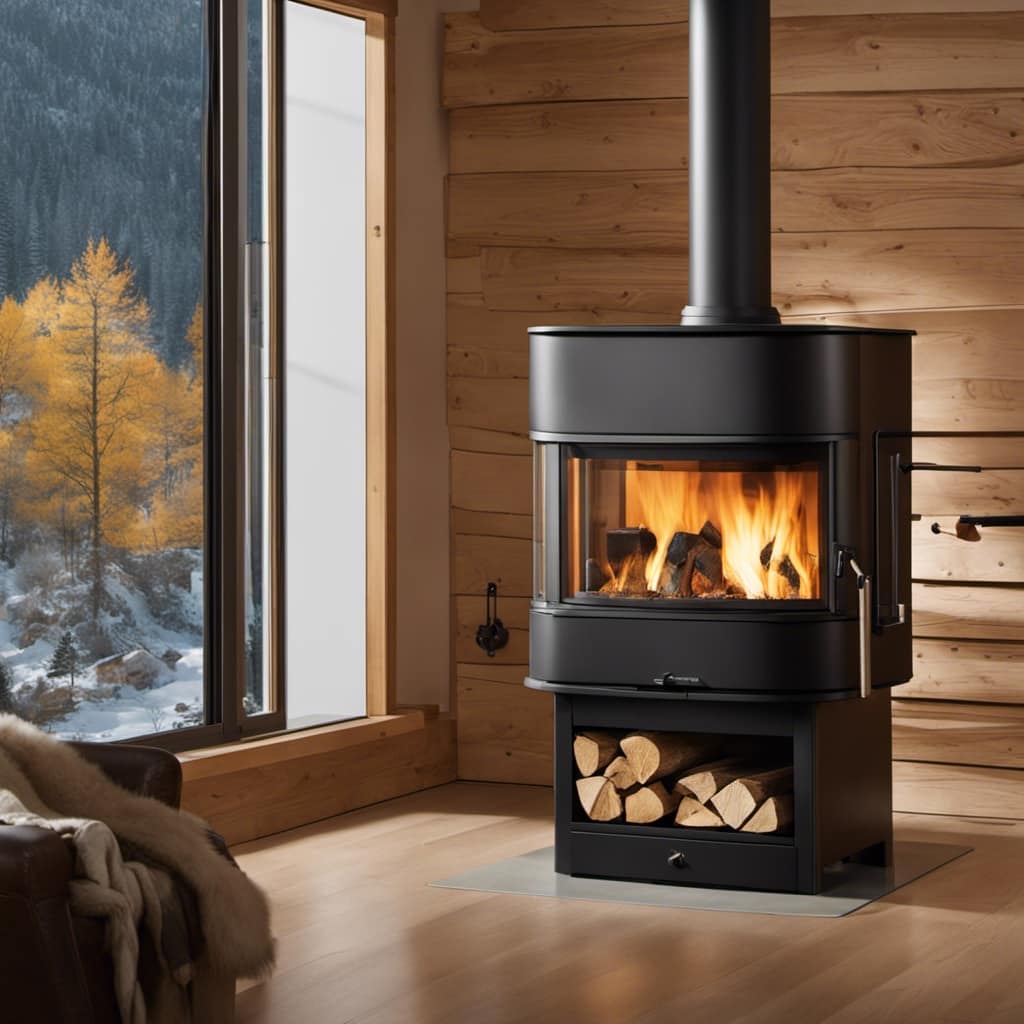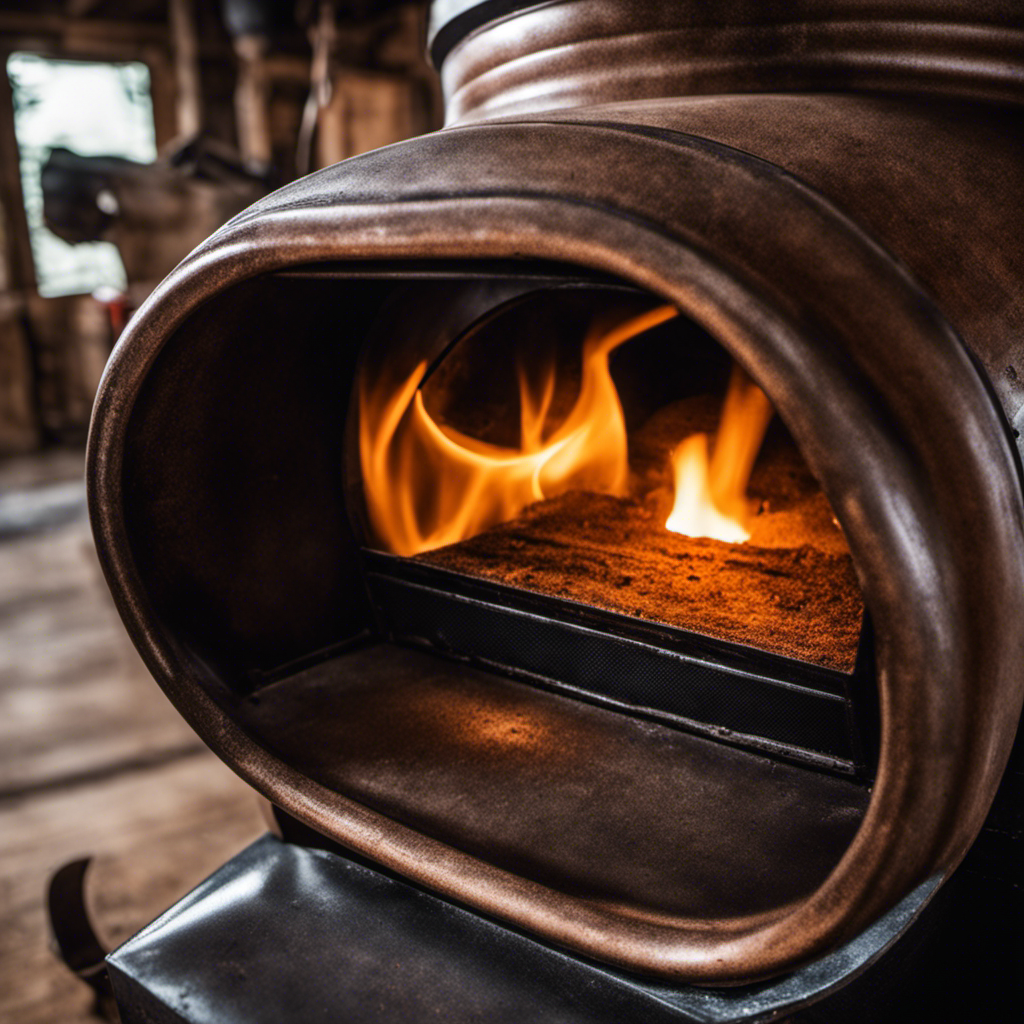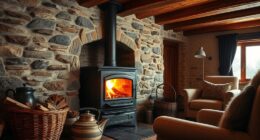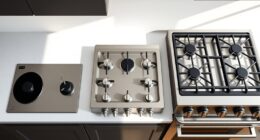If you possess a house equipped with a wood stove, understanding the necessary distance for placement away from a wall is crucial. Ensuring safety and preventing potential hazards is of utmost importance.
In this article, we will explore the factors that influence the required clearance for wood stoves, including local building codes and stove types.
By following these guidelines and taking the necessary precautions, you can enjoy the warmth and comfort of your wood stove while keeping your home and loved ones safe.
Key Takeaways
- Wood burning stoves require a minimum clearance of 36 inches from combustible walls.
- Clearances can be reduced with the use of heat shields or non-combustible wall protection.
- Local building codes provide specific guidelines for stove installation, materials used, and ventilation requirements.
- Regular cleaning and maintenance, including cleaning the stovepipe and chimney, is important for preventing fires and ensuring efficient operation.
Safety Regulations and Clearances
I need to make sure I follow all safety regulations and clearances when installing my wood stove. It’s crucial to adhere to clearance requirements to ensure the safe operation of the stove.
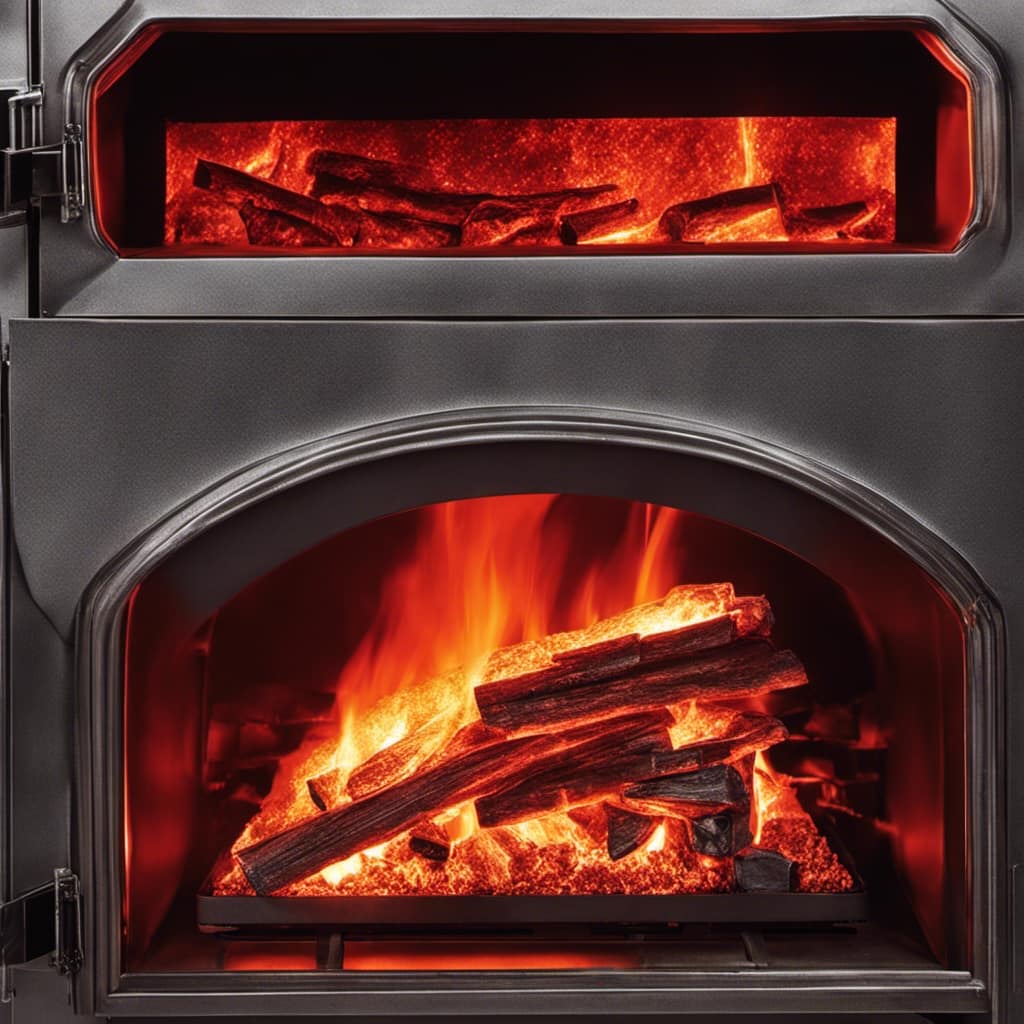
The National Fire Protection Association (NFPA) provides guidelines for minimum clearances around wood stoves to prevent fire hazards. These regulations specify the distance that the stove must be placed from combustible materials such as walls, furniture, and curtains.
The specific clearance requirements may vary depending on the type of stove and the materials used in the surrounding area. Safety precautions should also be taken to minimize the risk of accidental fires. This includes keeping flammable materials away from the stove, using a fire-resistant hearth, and installing smoke and carbon monoxide detectors in the vicinity.
Factors Affecting Required Distance
The type of stove and the materials used in the surrounding area are factors that can affect the required distance for safe installation. When determining how far a wood stove needs to be away from a wall, it is important to consider ventilation requirements and the use of heat resistant materials. Ventilation requirements ensure that the stove operates efficiently and safely, while heat resistant materials help protect the surrounding area from damage. To better understand the factors affecting the required distance, consider the following table:
| Type of Stove | Ventilation Requirements | Required Distance (inches) |
|---|---|---|
| Wood Burning | Proper airflow is crucial | At least 36 |
| Pellet Stove | Requires less ventilation | At least 12 |
| Gas Stove | Requires proper venting | At least 6 |
Understanding local building codes is essential to ensure compliance with regulations and to guarantee the safety of the installation. These codes provide specific guidelines for the distance required between a wood stove and a wall, taking into account factors such as stove type, materials used, and ventilation requirements.
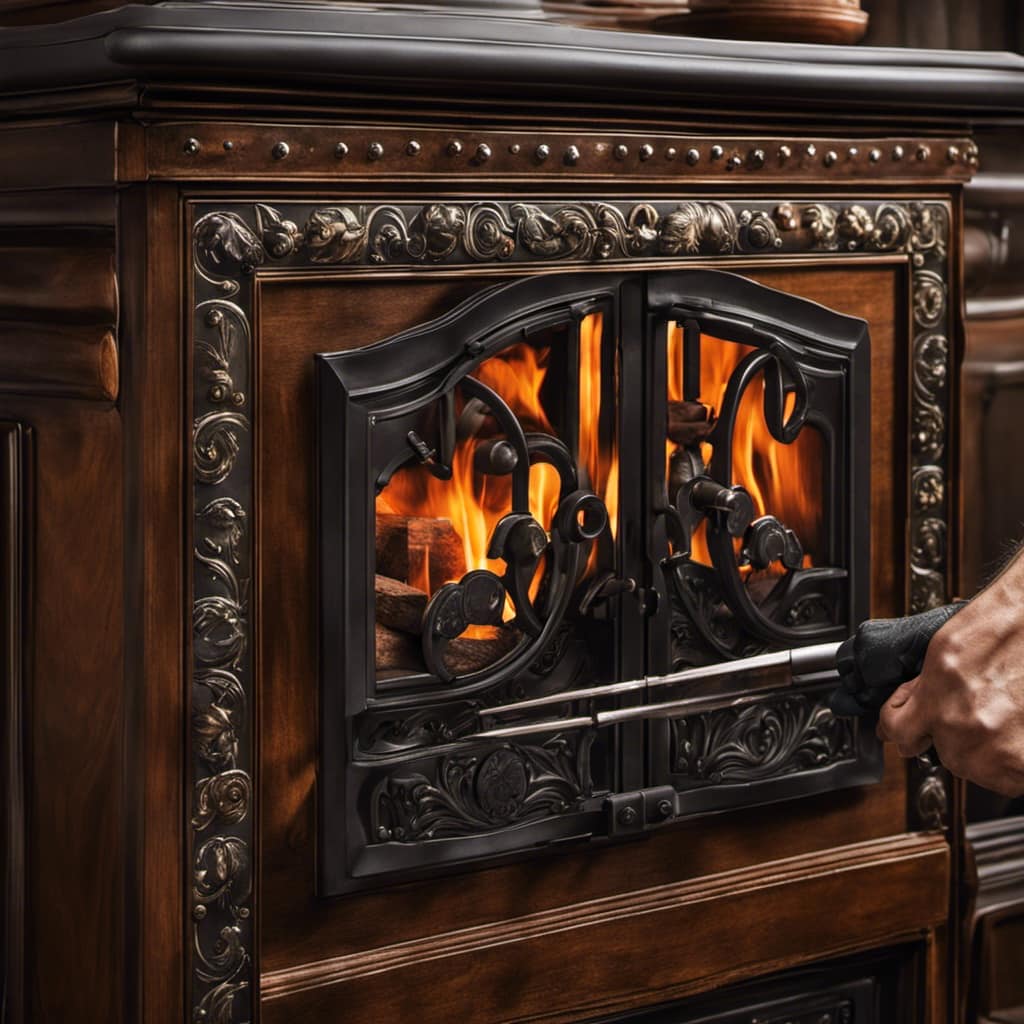
Understanding Local Building Codes
Fortunately, local building codes clearly outline the necessary guidelines for understanding the required distance between a wood stove and a wall. These guidelines take into account factors such as the type of wall, the material of the stove, and the heat output. When it comes to fire safety guidelines, it’s essential to adhere to these regulations to minimize the risk of accidents and ensure the safety of occupants.
Local building permits are typically required when installing a wood stove, and they often include specific instructions regarding the clearance distance. It’s crucial to study and follow these regulations precisely to prevent potential fire hazards and ensure compliance with local building codes.
Determining Clearance for Different Stove Types
Determining the clearance for different stove types involves considering factors such as heat output, wall material, and safety regulations.
When it comes to wood stoves, minimum distances for clearance are crucial for ensuring safety and preventing fire hazards. The specific clearance requirements can vary depending on the type of fuel being used.

For wood stoves, the minimum clearance from combustible walls is typically around 36 inches. However, this distance can be reduced if certain safety measures are in place, such as the use of a heat shield or non-combustible wall protection.
It’s important to consult local building codes and regulations to determine the exact clearances required for your specific stove and fuel type. Failure to comply with these clearances can result in dangerous situations and potential fire hazards.
Tips for Proper Installation and Maintenance
I’ve learned that regular cleaning and inspection are key to ensuring the proper installation and maintenance of a wood stove.
When it comes to installation tips, it’s important to follow the manufacturer’s guidelines for clearances to combustible materials. This means ensuring that there’s enough space between the wood stove and any nearby walls, floors, or ceilings.
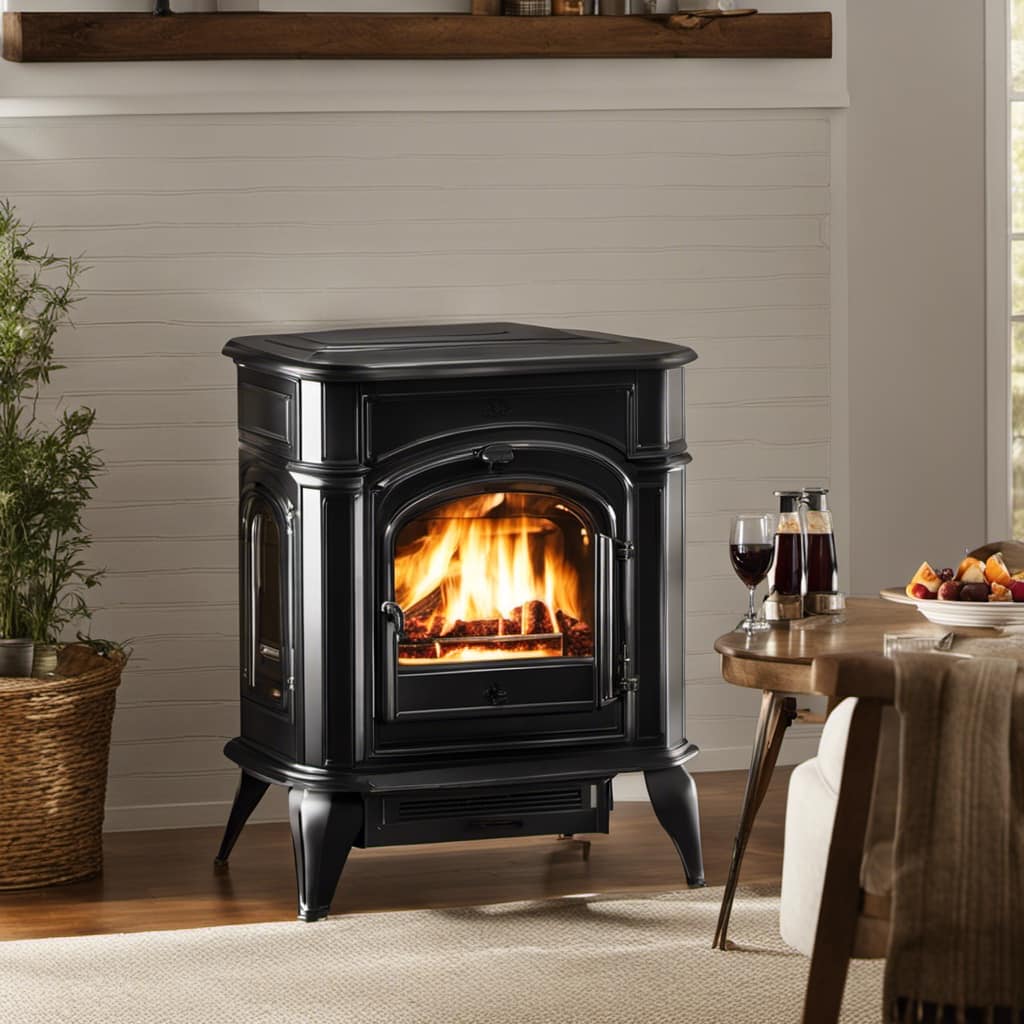
Maintaining proper clearances is crucial for preventing fires and ensuring the stove operates efficiently.
Additionally, regular maintenance is essential for keeping the wood stove in good working condition. This includes cleaning the stovepipe and chimney regularly to remove creosote buildup, inspecting the gaskets and seals for any signs of wear or damage, and checking for any loose or damaged components.
Frequently Asked Questions
Can I Install a Wood Stove Closer to a Wall if I Use a Heat Shield?
Yes, using a heat shield can allow for a wood stove to be installed closer to a wall. However, it is important to ensure that the heat shield is effective in reducing heat transfer to the wall.
Are There Any Specific Requirements for the Clearance Distance if I Install a Wood Stove in a Basement or an Attic?
When installing a wood stove in a basement or attic, specific clearance requirements must be followed. These requirements ensure the safe distance between the stove and surrounding materials, reducing the risk of fire hazards.

Is There a Minimum Distance That a Wood Stove Should Be Placed From Furniture or Curtains?
The minimum distance for a wood stove from furniture is typically specified by the manufacturer and can vary. It is important to maintain proper clearance to prevent curtains or other flammable materials from catching fire.
Are There Any Restrictions on the Type of Flooring Material That Can Be Placed Near a Wood Stove?
There are certain safety precautions and flooring restrictions that need to be followed when placing a wood stove. It is important to ensure that the flooring material is non-combustible and can withstand the heat generated by the stove.
What Are the Potential Consequences of Not Following the Recommended Clearance Distances for a Wood Stove?
Not following the recommended clearance distances for a wood stove can lead to potential dangers and fire hazards. It is crucial to adhere to these guidelines to ensure the safety of your home.
Conclusion
In conclusion, when it comes to wood stove safety, it’s crucial to ensure the stove is properly installed with the required clearance from walls. By understanding local building codes and considering factors that affect clearance, you can enjoy the cozy warmth of your wood stove without any worries.
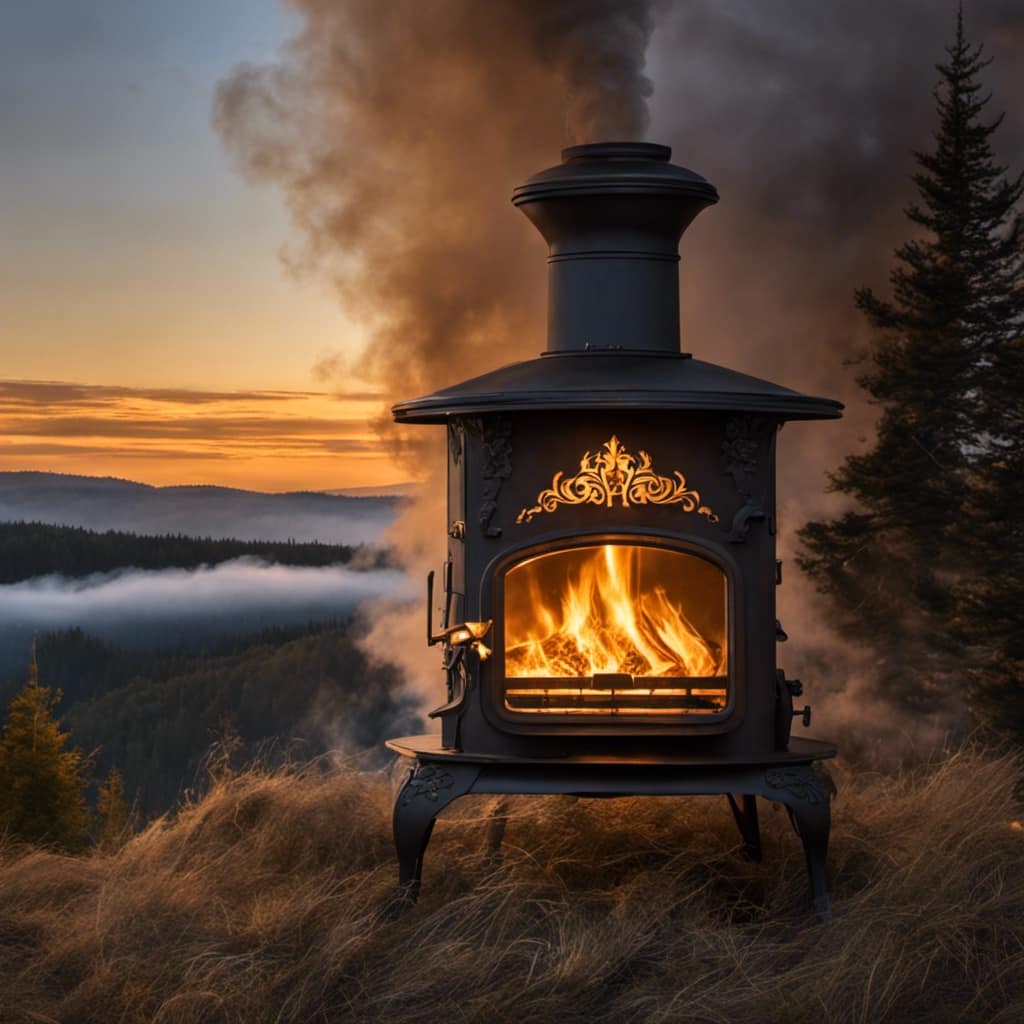
Remember, following safety regulations and maintaining the stove regularly will keep you and your home safe from the fiery dangers.
Stay warm, stay safe!
Growing up surrounded by the vast beauty of nature, Sierra was always drawn to the call of the wild. While others sought the comfort of the familiar, she ventured out, embracing the unpredictable and finding stories in the heartbeat of nature.
At the epicenter of every remarkable venture lies a dynamic team—a fusion of diverse talents, visions, and passions. The essence of Best Small Wood Stoves is crafted and refined by such a trio: Sierra, Logan, and Terra. Their collective expertise has transformed the platform into a leading authority on small wood stoves, radiating warmth and knowledge in equal measure.





